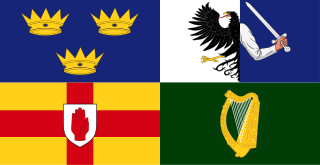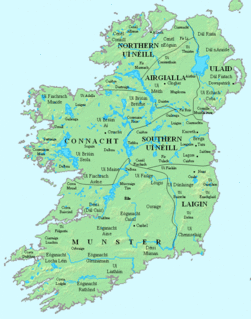Aindileas Ua Chlúmháin (died 1170) was an Irish poet.

The Irish are a Celtic nation and ethnic group native to the island of Ireland, who share a common Irish ancestry, identity and culture. Ireland has been inhabited for about 12,500 years according to archaeological studies. For most of Ireland's recorded history, the Irish have been primarily a Gaelic people. Anglo-Normans conquered parts of Ireland in the 12th century, while England's 16th/17th-century (re)conquest and colonisation of Ireland brought a large number of English and Lowland Scots people to parts of the island, especially the north. Today, Ireland is made up of the Republic of Ireland and the smaller Northern Ireland. The people of Northern Ireland hold various national identities including British, Irish, Northern Irish or some combination thereof.

A poet is a person who creates poetry. Poets may describe themselves as such or be described as such by others. A poet may simply be a writer of poetry, or may perform their art to an audience.
Contents
Aindileas was the son of Gilla Aenghus Ua Chlúmháin, ollamh of Connacht in poetry, who died in 1143.

Connacht, formerly spelled Connaught, is one of the provinces of Ireland, in the west of the country. Up to the 9th century it consisted of several independent major kingdoms.
No surviving poems by either are known to still exist, except perhaps anonymously. A later bearer of the name, who died in 1438, is listed as O'Clumain, Chief Poet to O'Hara , a Chief of the Name in County Sligo.
O'Hara is an Anglicized form of the Irish name Ó hEaghra. The death of the eponym is mentioned in the Annals of the Four Masters – 926. Eaghra Poprigh mac Saorghus, lord of Luighne, in Connaught ... died.
The Chief of the Name, or in older English usage Captain of his Nation, is the recognised head of a family or clan. The term has sometimes been used as a title in Ireland and Scotland.

County Sligo is a county in Ireland. It is located in the Border Region and is part of the province of Connacht. Sligo is the administrative capital and largest town in the county. Sligo County Council is the local authority for the county. The population of the county is 65,535 according to the 2016 census, making it the 3rd most populated county in the province. It is noted for Benbulben Mountain, one of Ireland’s most distinctive natural landmarks.



